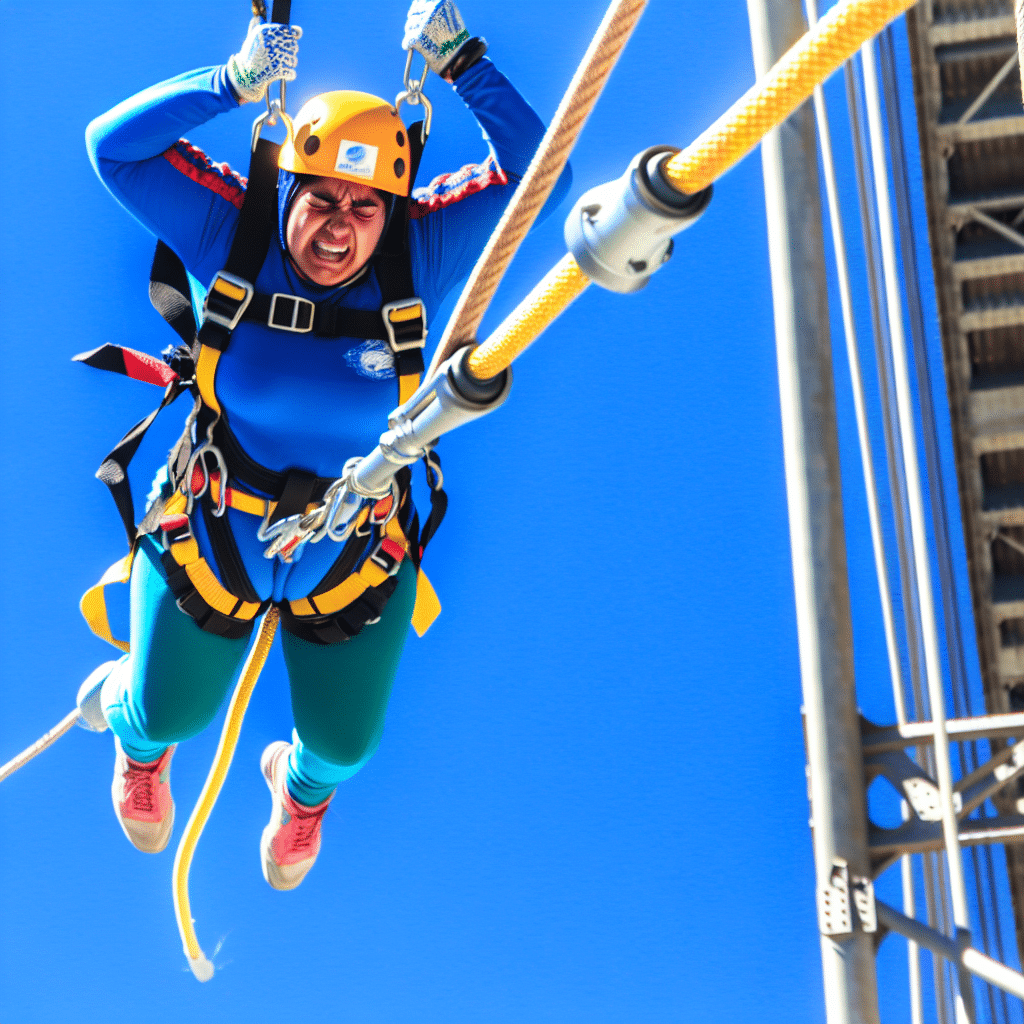Bungee jumping, an adrenaline-pumping adventure that sees individuals leaping off high platforms with an elastic cord attached to their ankles, has gained widespread popularity over the years. The thrill, the rush, and the sheer excitement of defying gravity can be incredibly alluring. However, behind the exhilarating facade lies a darker, more perilous reality. This article delves into the sobering topic of bungee jumping deaths, examining their causes, preventative measures, and the psychological impact on adventurous souls who dare to take the plunge.
How Common Are Bungee Jumping Deaths?
Bungee jumping fatalities are rare, yet they cast a long shadow over the sport’s reputation. When people hear about bungee jumping deaths, they often wonder just how frequent these tragic incidents are. Statistically, the odds of dying while bungee jumping are extremely low—estimated at about 1 in 500,000 jumps. To put this into perspective, the fatality risk is lower than that of skydiving or even driving a car. However, for those affected by these tragedies, numbers offer little comfort.
Case Studies and Notable Incidents
A closer examination of individual cases can shed light on the causes of bungee jumping deaths. One of the most high-profile incidents occurred in 1989 when a young woman named Sarah Rooke tragically died during a jump in the UK. The cause? Incorrectly calculated rope length, which led to her hitting the ground instead of rebounding safely. Similarly, in 2012, an Australian tourist named Erin Langworthy survived a jump into the Zambezi River after her cord snapped mid-air, but not everyone is as fortunate.
These incidents highlight that human error and equipment failure are the most common culprits in bungee jumping deaths. Miscommunication, improper maintenance, and insufficient safety protocols are the predominant risks that lead to these heart-wrenching outcomes.
Preventative Measures to Reduce Risks
Given the risks involved, it is crucial to understand the safety measures put in place to minimize bungee jumping deaths. Here are some robust protocols that reputable companies follow:
Rigorous Safety Checks
Before any jump, thorough inspections of the equipment—including the bungee cord, harnesses, and attachment points—are mandatory. These checks are designed to identify and rectify any potential flaws that could jeopardize a jumper’s safety.
Professional Training
Operators are trained extensively, not just in the mechanics of the jump but also in emergency procedures. This training involves both classroom instruction and hands-on practice to ensure they are well-equipped to handle any situation.
Standardized Procedures
A standardized set of guidelines is essential for every jump. This includes double-checking measurements, ensuring proper harness fit, and conducting a pre-jump briefing with the participant to confirm they understand the process.
Quality Gear
Using high-quality, well-maintained gear can significantly reduce the likelihood of equipment failure. Reputable bungee jumping operators invest in the best equipment available and adhere to stringent maintenance schedules.
Psychological Impact: Is It Worth the Risk?
The psychological aspect of bungee jumping cannot be ignored. For many, the prospect of jumping off a bridge or platform is both thrilling and terrifying. But what happens when the unthinkable occurs? How do survivors and the families of victims cope with the aftermath of bungee jumping deaths?
Survivor’s Guilt
Survivors of bungee accidents often experience severe psychological trauma, including survivor’s guilt. They grapple with the question: Why them and not me? This can lead to long-lasting emotional and psychological scars.
Mental Health Support
It is essential for survivors and the families of victims to receive mental health support. Therapy and counseling can help them navigate their grief and trauma, enabling them to find some semblance of normalcy in their lives again.
Conclusion: The Dual Nature of Adventure Sports
Bungee jumping represents the quintessential thrill-seeker’s dream, offering a rush that few other activities can match. However, the specter of bungee jumping deaths serves as a grim reminder of the risks involved. While the probability of such fatalities is low, they underscore the need for rigorous safety protocols and conscientious operators.
For those contemplating this exhilarating sport, it’s crucial to weigh the thrill against the risk and to choose only the most reputable companies to ensure the safest possible experience. As with any adventure sport, the risk can never be entirely eliminated, but with the right precautions, it can be significantly mitigated.
Ultimately, bungee jumping remains a double-edged sword—a breathtaking leap into the void that could either end in sheer exhilaration or, in the rarest and most tragic of circumstances, untimely death.




